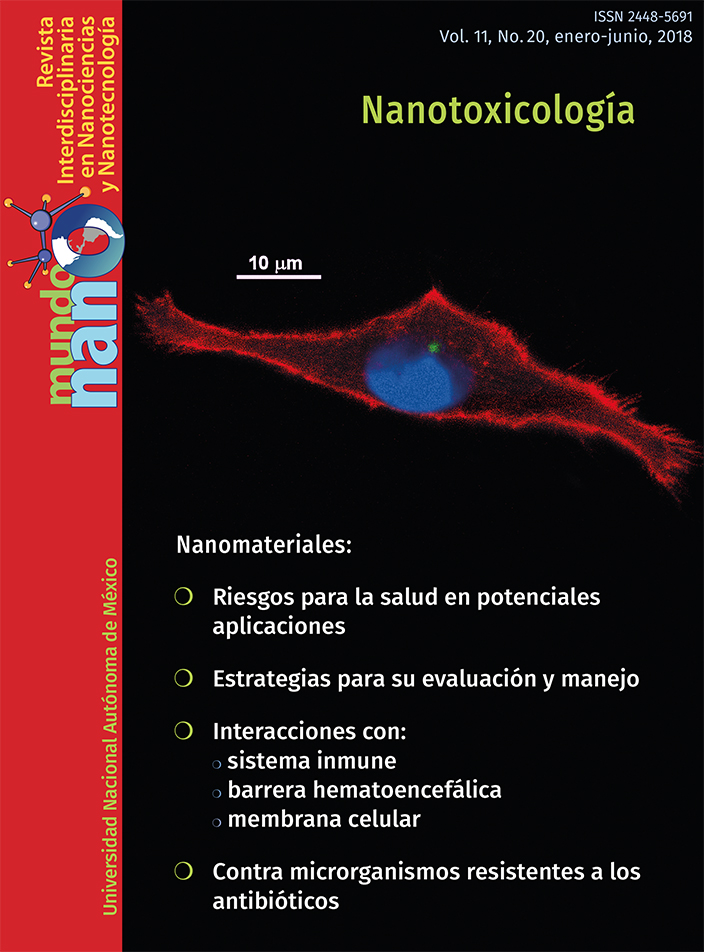Membrana celular y la inespecificidad de las nanopartículas. ¿Hasta dónde puede llegar un nanomaterial dentro de la célula?
Contenido principal del artículo
Resumen
Resumen:
En la actualidad, estamos en contacto con una gran variedad de nanopartículas de uso industrial ya sea como residuo por los procesos de manufactura o como los empleados en productos de uso cotidiano. Estos inevitablemente entraran en el organismo atravesando diversas barreras naturales (como la piel o los epitelios intestinales o respiratorios) e interactuaran con diferentes tipos de células. Los mecanismos de interacción son tan variados e incluso pueden verse influenciados en función del tipo de nanoparticula y su naturaleza química.
Abstract
Nowadays we are in direct contact to different sort of industrial nanoparticles, which can be produced either consequence of manufacture process or incorporated to products of personal use. They finally go into organism through skin or epithelium (intestinal or alveolar). The cell´s interaction can be influenced by nanoparticle properties such as shape, size and chemical composition.
Descargas
Detalles del artículo

Mundo Nano. Revista Interdisciplinaria en Nanociencias y Nanotecnología, editada por la Universidad Nacional Autónoma de México, se distribuye bajo una Licencia Creative Commons Atribución-NoComercial 4.0 Internacional.
Basada en una obra en http://www.mundonano.unam.mx.





